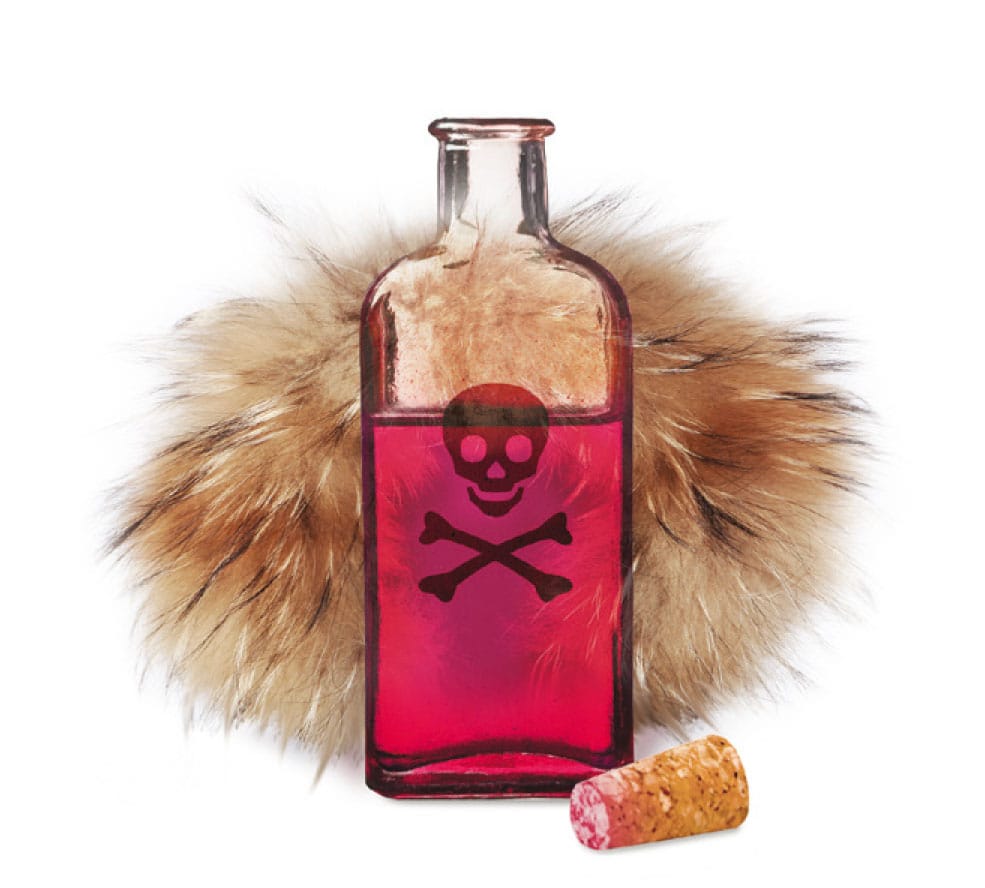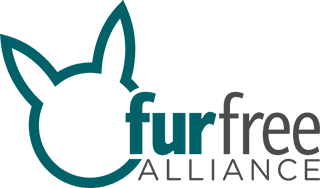After an animal is skinned, the pelt has to be treated with a variety of chemicals to prevent it from decay. Just as with the processing of leather, this involves toxic chemicals and heavy metals.

Toxic fur
Hazardous chemicals
Fur tanning and dressing contribute to environmental pollution, with toxics such as formaldehyde (linked to leukemia), chromium (linked to cancer) and ammonia applied to the pelt to prevent biodegration. Fur processors are frequently fined for releasing toxic waste into the environment. The Environmental Protection Agency in the US has previously fined six fur processing plants for causing high levels of pollution and for using solvents that:
“…may cause respiratory problems, and are listed as possible carcinogens”

In 2007 a trade publication, The Trapper & Predator Caller, reported that China was considering imposing a punitive tax on the fur dressing and tanning industries as part of an attempt to penalize “industries causing excessive pollution.”
Health risks
The chemicals used to process fur pose an overall threat to the health of consumers who wear the products and for the workers in fur processing plants.
Independent laboratories in China, Italy, The Netherlands and Germany, found harmful levels of toxics in fur trims on children’s fashion wear – by brands as D&G, Woolrich, Canada Goose and Nickelson – such as formaldehyde and ethoxylates, which can cause allergies, cancer and hormonal imbalance.
Professor of Environmental Chemistry and Toxicology at the Vrije Universiteit of Amsterdam, Dr Jacob de Boer, says:
“The alarming levels of toxics found in the fur trims of infant jackets and fur accessories in Europe and China justify stringent measures to seriously limit or prohibit the use of these chemicals in the preparation of fur products during production processes.”
Currently there is no responsible authoritative body in place that monitors the values of hazardous chemicals in fur products and ensures compliance with regulatory benchmarks and maximum levels of industry standards.
According to the website of the Fur Council of Canada:
“Small quantities of formaldehyde can be used to protect fur follicles during dressing or dyeing.”
Formaldehyde is on every major list of toxic substances, including those of the American National Toxicology Program (NTP) and the International Agency for Research on Cancer (IARC), that both list formaldehyde as carcinogenic to humans.

Toxics in fur are absorbed through air or skin and can remain in the body for over twenty years, causing chronic health effects.
In March 2016, the European Commission ordered the withdrawal from the market of fur trimmed children’s jackets for containing high levels of hazardous chemicals:
The amount of Chromium VI in the leather of the hood’s edging is too high (measured values up to 37.3 mg/kg). Chromium VI is sensitising and may trigger allergic reactions.
The RAPEX procedure, a European rapid alert system for dangerous products, was issued after tests showed toxic levels of hexavalent chromium and formaldehyde in fur collars on Blumarine Baby jackets. The chemical levels exceeded the maximum permitted dose set out by the REACH Regulation.
The majority of the hazardous chemicals detected have no specific statutory limits for fur articles. However, given the proven high levels and frequent contaminations, such limits are obviously necessary. These gaps in the legislation must be closed by the national governments and the EU. In addition, the contamination of fur products needs to be monitored by the national authorities better than what has been the case up to now.
More facts
Toxic Fur: A Global Issue. Research in China (2018)
A study commissioned by ACTAsia
Toxic Fur (2016)
A Dutch report of the research laboratory Bremer Umweltinstitut commissioned by Bont voor Dieren.
Sales ban and withdrawal from the market. Italian Ministry of Health (2015)
Risk evaluation and provision of sales ban based on Toxic Fur research by LAV.
Poisons in Furs (2011)
A study by EcoAid commissioned by FOUR PAWS.
TOXIC FUR: The Impacts of Fur Production on the Environment and the Risks to Human Health (2009)
A report by the Humane Society of the United States.

